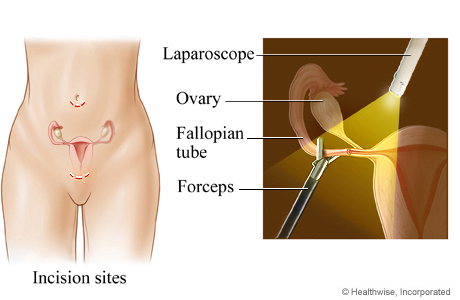Abdominal Tubal Sterilization: Facts, Procedure, and Insights
– Abdominal tubal sterilization, also known as tubal ligation or having your tubes tied, is a type of permanent birth control for women.
– The procedure involves cutting, tying, or blocking the fallopian tubes to prevent pregnancy.
– Tubal ligation does not affect the menstrual cycle.
– It can be done at any time, including after childbirth or in combination with another abdominal surgery like a C-section.
– Most tubal ligation procedures cannot be reversed and attempting reversal requires major surgery.
– Tubal ligation is one of the most commonly used surgical sterilization procedures for women.
– It does not protect against sexually transmitted infections.
– It may decrease the risk of ovarian cancer if the fallopian tubes are removed.
– Risks associated with tubal ligation include damage to the bowel, bladder, or major blood vessels, reaction to anesthesia, improper wound healing or infection, continued pelvic or abdominal pain, and failure of the procedure leading to future unwanted pregnancy.
– Factors that increase the risk of complications include a history of pelvic or abdominal surgery, obesity, and diabetes.
– Before undergoing tubal ligation, a healthcare provider will discuss the reasons for wanting sterilization, factors that could lead to regret, risks and benefits of reversible and permanent contraception methods, details of the procedure, causes and probability of failure, ways to prevent sexually transmitted infections, and the best time to do the procedure.
– Tubal ligation can be done following a vaginal birth using a small incision under the belly button.
– Tubal ligation can be performed during a C-section or as an outpatient procedure using a laparoscope and short-acting anesthesia.
– Common side effects of tubal ligation include abdominal pain or cramping, fatigue, dizziness, gassiness or bloating, and shoulder pain.
– Recovery involves avoiding straining or rubbing the incision, refraining from heavy lifting and sex until instructed by a healthcare provider, and gradually resuming normal activities.
– Stitches dissolve on their own, and a follow-up appointment may be needed.
– Possible complications include a temperature of 100.4 F or greater, fainting spells, severe abdominal pain, bleeding or foul-smelling discharge from the wound.
– The success rate of tubal ligation is high, with fewer than 1 out of 100 women getting pregnant in the first year after the procedure.
– However, the younger the individual, the higher the risk of failure.
– If pregnancy occurs, there is a risk of ectopic pregnancy, which requires immediate medical treatment and cannot continue to birth.
– Abdominal tubal sterilization is a form of permanent birth control that involves sealing the fallopian tubes by destroying parts of the tubes or blocking them with plastic rings or clips.
